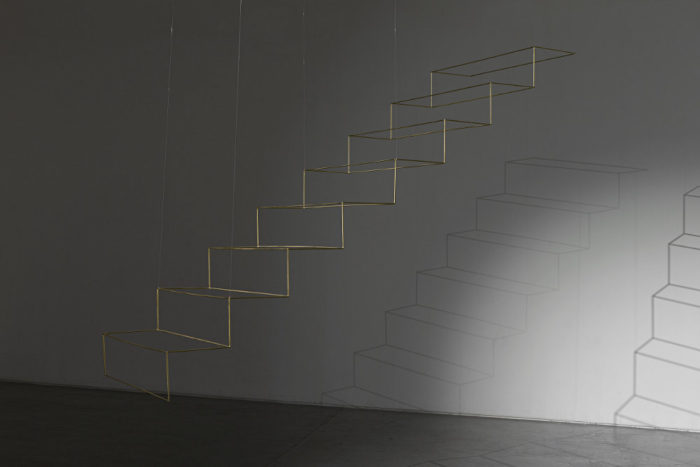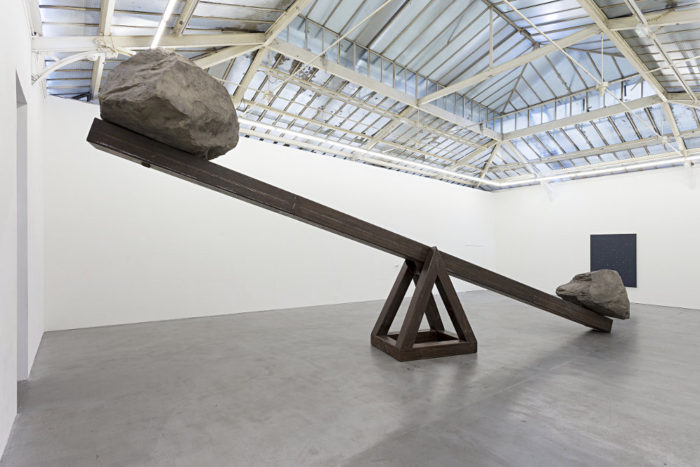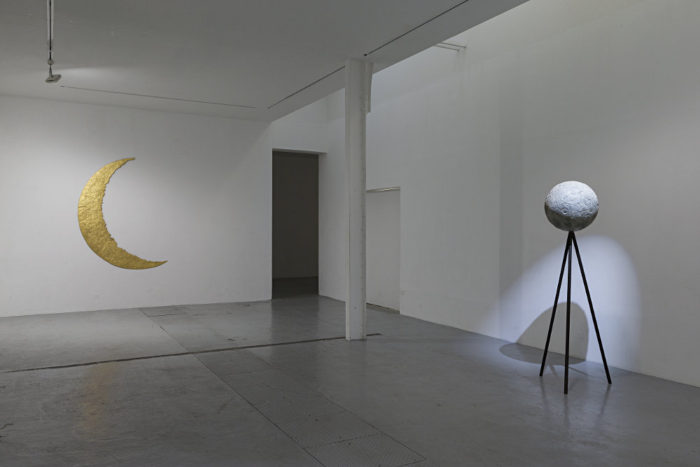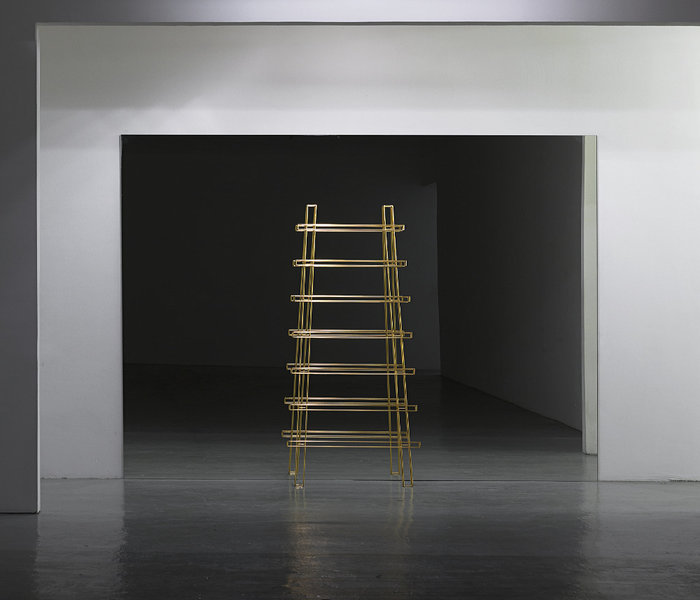





This work, easily overlooked for those not in the know, is comprised of three tiny dices, crafted from polished dark meteorite. It evokes a time traveller, brought to our realm by an unknown destiny, used as a tool to shape others’ destinies, which conjures a fate that hints at a strong sense of the absurd. Using a miniature piece to name the entire exhibition is characteristic of Gao’s unique style of thinking: unadorned, austere presentation verging on simple. However, it takes a perceptive observer to decipher his true message and the discourse he intends to express through his work. There is an old Chinese proverb: “In the smile hides the needle.” In Gao’s work, that very needle is constantly present, aiming to awake the viewer’s consciousness.
As a sceptic, Gao frequently utilises simplistic works of art to create conflicts and theatrical effects, urging the viewer to question his daily experiences and inert perceptions, in order to rethink his point of view. By walking into the exhibition room, one’s sight is filled by a giant seesaw with a large rock on one end and a small rock on the other one – a work entitled “Fate” (2016). The work’s impeccable authenticity makes the viewer forget that its structure – having the larger rock on top – defies physical laws. Fate, though gigantic in volume, has a calm and resolute presence, like the unspoken principles that define our daily lives. Many paradoxes in our lives exceed our cognitive ranges, leading us to ponder the unknown yet objective reality that exists behind them.
Gao’s scepticism is also sensed in the two different pieces that comprise “Prophecy” (2016). One piece resembles a full moon, while the other one resembles a crescent moon, the standard shapes used to depict moons. Actually, however, neither representation is the satellite that we see in the sky every day. They are, instead, projections of an imagined moon in the form of physical images. The artist relates that: “There is often a great deviation between perception and reality of the things we are highly familiar with.”
A similar psychological manoeuvre is employed significantly in “Up” (2016), a series, wherein the artist presents a simple, stair-shaped structure, with a clean outline and nothing else. But when the viewer sees this “staircase,” he subconsciously thinks of an upward motion and its extended meanings. The simpler and common a structure is, the more likely the viewer will bring his or her own experiences and aspirations into the fold when interpreting it.
By playing with forms and naming, Gao deliberately avoids a direct and straightforward explanation of his work. The artist provides hints but not answers, leaving room for the viewer to engage in divergent thinking and “poetic” possibilities. At first glance, “You and me” (2012-2016) appears to be a moon, placed on a tripod, but upon closer examination, the object actually represents planet Earth, which resembles the moon, in a desolate, doomsday scenario. This is a parody of the overused expression of love, “you and I until the end of the world,” yet somehow, the work is filled with an inexplicable sincerity.
Poetic interpretation is also possible for the “You were me” (2016) series. At first sight, the work shows broken mirror fragments that appear randomly scattered on a canvas, but upon closer examination, one discovers that the entire work had been carefully designed by the artist to form a symmetrical, logical structure. The fragments comprise all the pieces of a shattered mirror, placed into different formations with different spacing in-between them. Gao uses a piece of artwork to restore an entire mirror, a romantic gesture that demonstrates his attempt to destroy and reconstruct logic systems in an interesting way.
Gao’s work invites the viewer to open a door, through which he can question and change his stagnant view of the world. Such is the symbolic motivation behind the artist’s placement of a pure gold work, “Door” (2016), right at the entrance to the exhibition. The artist leads the viewer to a new spatial-temporal space beyond the established perceptions of the material world, where he can conceptualise “Self,” “Fate,” and “Cosmos,” as well as their interrelations.
In “Autobiography” (2014), the artist arrays his rock collection, accumulated through many years, onto a dark canvas, like a tiny universe. The work allows the viewer to appreciate the differences between absence and the beauty of small, individual presences, with a sense of implied fatalism.
Gao’s artistic endeavours are never forced attempts to pursue the so-called “social intervention” or “relational aesthetics” propositions. He is passionate about developing awareness of many small and varied processes, continuously excavating the material world’s languages and constructing spiritual experiences through the reshaping of forms and symbols. He does not advocate using art to loudly proclaim philosophical theories, political opinions, or social responsibilities. For him, art is a romantic, individual, creative process in which the self is rigorously examined. He brings life’s experiences and the feedbacks that continually affect him into each and every one of his works, thus endeavouring to find himself and understand the world.
Gao Weigang: Hundred Thousands Light-Years
Thu 16 Mar 2017 to Sat 6 May 2017
108 rue Vieille du Temple 75003
www.vnhgallery.com
Open: 10am-7pm Tue-Sat
Beili Wang
Writing and photographs via press release courtesy of the artist and VNH Gallery, Paris
